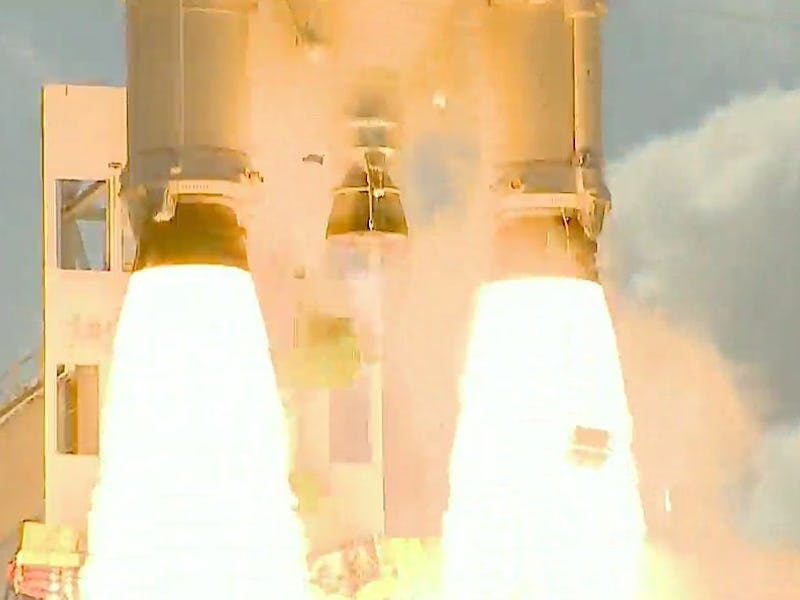ESA’s Ariane 5 launch vehicle successfully launched a quartet of communications satellites into space for the first time. Historically, the Galileo satellites have launched in pairs atop a Russian Soyuz rocket. Following a successful separation, the rocket’s second stage is headed for a new destination: a rocket graveyard in the sky.
Ariane 5 lifted off right on time from French Guiana’s Kourou spaceport at 8:06 a.m. EST, marking the sixth Ariane 5 flight of the year — and the rocket’s 89th mission overall — since debuting in 1996. The rocket and its Galileo payload headed for an orbital parking spot approximately 14,000 miles above the Earth — relying on their taxi’s hydrazine-fueled second stage to place them in the proper place — joining a fleet of 14 similar spacecrafts already in orbit, which launched in pairs on Russian Soyuz rockets.
The Galileo mission will be to provide global positioning capabilities for Europe that are independent of navigation networks such as the U.S. Air Force’s Global Positioning System (GPS) and Russia’s Glonass constellation.
More interesting, however, is the Ariane 5 rocket’s fate. Once it’s completed its job, it’ll head to the orbital graveyard, where all good rockets and retired spacecrafts go to live out their days.
There are no tombstones in an orbital graveyard; in fact it’s better to think of it more like a junk yard. When a satellite (or rocket stage) completes its mission and is ready to be decommissioned, it shoots of into one of two places: the aforementioend orbital graveyard or a fiery death as it re-enters the Earth’s atmosphere.
The four Galileo satellites successfully separated and are healthy.
Disposing of the satellites in low-Earth orbit is pretty simple — the satellite’s orbit decays, causing it to fall towards the Earth. Then, searing heat from the friction of the air burns up the satellite as it re-enters the atmosphere. Satellites in higher orbits are a bit more tricky. Basically, they have to be moved out of the way, into an orbit 200 miles above geosynchronous orbit (or approximately 22,400 miles above the Earth).
Sure, these rockets are destined to be space junk, at least until someone can set up a satellite service and repair depot, or they can be turned into a future habitat. Makes the rocket graveyard of Gravity all the more believable.
